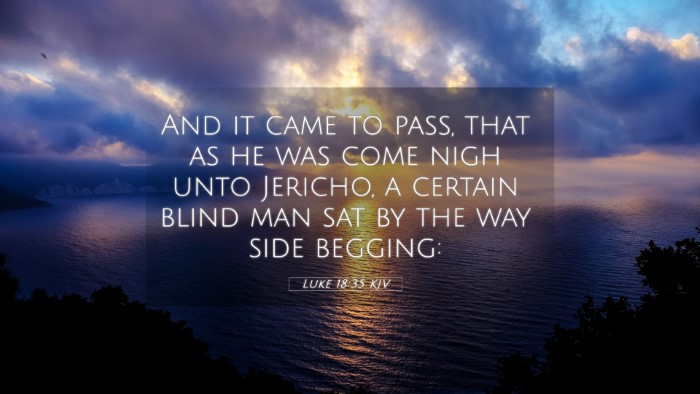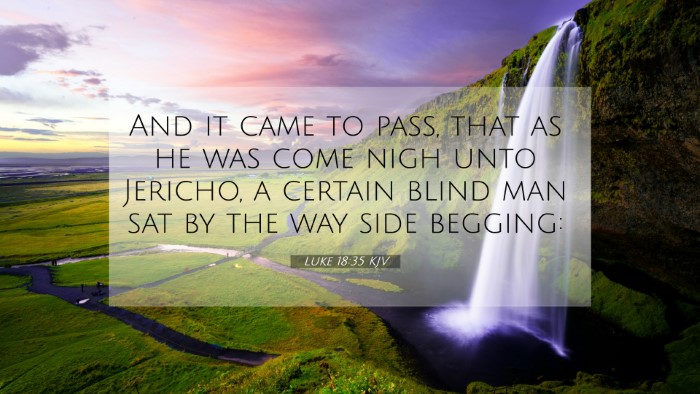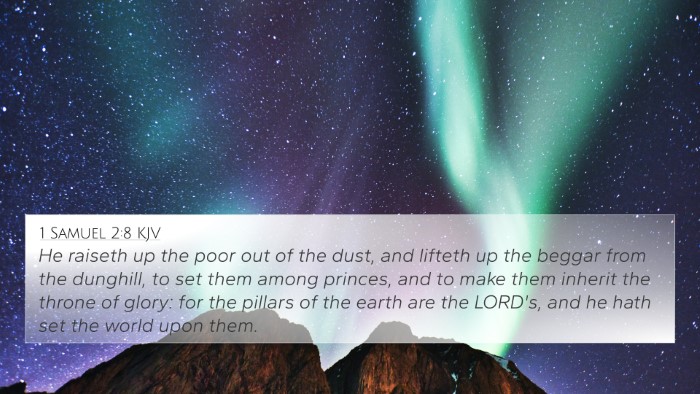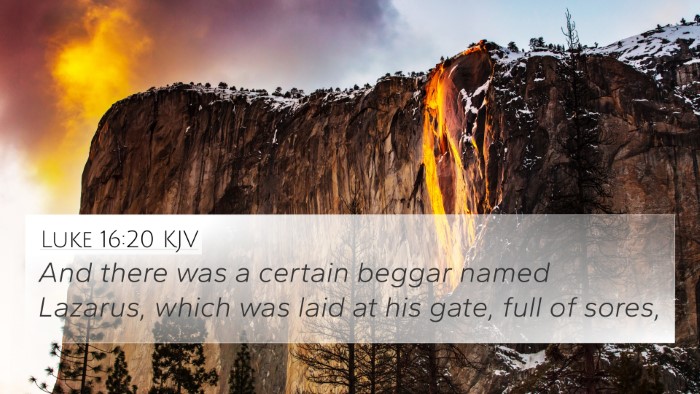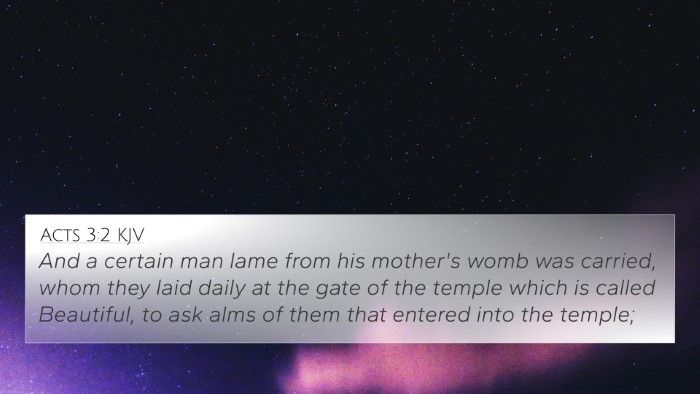Understanding Luke 18:35
Verse: “And it came to pass, that as he was come nigh unto Jericho, a certain blind man sat by the way side begging.” (Luke 18:35)
Introduction
This verse takes place in the context of Jesus' journey to Jerusalem, featuring a blind man sitting by the roadside. Understanding this verse involves recognizing its significance within the broader narrative of Jesus’ ministry, His miracles, and the contrasting themes of physical and spiritual blindness.
Summary of Meaning
The narrative illustrates key themes such as faith, the recognition of Jesus' identity, and the transformative nature of His compassion. The blind man's position as a beggar highlights both his physical need and a metaphorical representation of spiritual blindness prevalent in society. In his humble state, he becomes a focal point for Jesus' healing power and mercy.
Public Domain Commentary Insights
-
Matthew Henry:
Henry emphasizes the blind man’s desperation and determination to seek help from Jesus. His call for mercy signifies an acknowledgment of Jesus’ authority and kindness. The crowd’s reaction suggests a disconnect between the Savior and societal perceptions, reminding readers of the importance of faith over societal status.
-
Albert Barnes:
Barnes notes the specific mention of Jericho, a city known for its significance in the Old Testament, which adds a layer of historical context. He points out that the blind man’s cry to Jesus reflects a broader human cry for salvation. Barnes also highlights the significance of faith in receiving healing from Christ.
-
Adam Clarke:
Clarke provides insight into the location of Jericho and its association with divine intervention. He draws attention to the juxtaposition of physical blindness against the spiritual insight that Jesus imparts, reinforcing themes of restoration and enlightenment found throughout the Gospels.
Cross-References and Thematic Connections
The following Bible verses relate closely to Luke 18:35, showcasing connections between themes of healing, faith, and spiritual insight:
- Mark 10:46-52: The account of Bartimaeus, a blind man receiving sight, illustrates the faith required to approach Jesus.
- John 9:1-12: The healing of the man born blind highlights both physical and spiritual blindness in society.
- Matthew 20:29-34: Another instance of blind men calling out to Jesus, showing persistent faith in seeking help.
- Isaiah 35:5-6: Prophetic scripture that speaks of healing and restoration, resonating with Jesus’ ministry.
- Luke 4:18-19: Jesus proclaims the purpose of His ministry, emphasizing healing and freedom for the afflicted.
- Romans 10:13: “For whosoever shall call upon the name of the Lord shall be saved,” paralleling the blind man's call for mercy.
- John 8:12: Jesus as the light of the world, providing spiritual sight in contrast to physical blindness.
Tools for Bible Cross-Referencing
To deepen your understanding of Bible verse meanings and establish connections between scriptures, consider utilizing the following tools:
- Bible Concordance: A tool for locating specific verses and their context.
- Bible Cross-Reference Guide: Helps identify related passages across the scriptures.
- Bible Study Software: Digital resources that offer cross-referencing capabilities.
- Online Bible Study Platforms: Websites that provide comparative analysis of biblical texts.
Conclusion
Luke 18:35 serves as a reminder of the importance of faith and the transformative power of Christ’s mercy. By engaging with communal interpretations and cross-referencing various scriptures, believers can cultivate a deeper understanding of Scripture and its themes.

